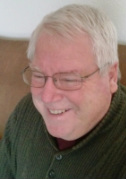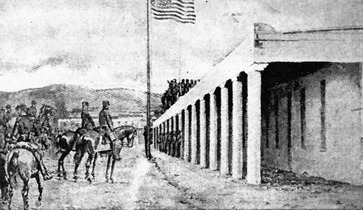American Seizure of New Mexico
 Ray Shortridge 2014
Ray Shortridge 2014
Ray Shortridge researched and wrote an article, called "The Incidental Conquest," which analyzes the American seizure of New Mexico. In August, 1846, an American army commanded by Brigadier General Stephen Watts Kearny conquered New Mexico in one of the military campaigns the United States government conducted against Mexico. A few weeks later, Kearny reported to the War Department that there was no need to fear from an open revolt. Kearny then left New Mexico with a column of troops to assist in the conquest of California leaving several companies of the 1st Dragoons and the 2nd Missouri Volunteers to occupy New Mexico.
 General Kearny addressing the people of Santa Fe, 8-19-1846
General Kearny addressing the people of Santa Fe, 8-19-1846
Before departing, Kearny established a civil government for the territory. He issued a judicial code and appointed a governor, district attorney, and a secretary to administer the territory. In January, a rebellion broke out in Taos in which the governor and several other Americans were killed. The army suppressed the rebellion, using artillery to blast through the adobe walls of the Catholic church at Taos Pueblo. Later, the military convicted seventeen of the rebels of treason, including Pueblo Indians and New Mexicans, and hanged them.
How did the American conquest of New Mexico degenerate so quickly from a bloodless surrender of Santa Fe to an armed insurrection, murder, combat, and executions?
For the complete article written by Mr. Shortridge, please click here.
Sketch of Kearny is from "History and Government of New Mexico" by John H. Vaughan, published in 1921.
How did the American conquest of New Mexico degenerate so quickly from a bloodless surrender of Santa Fe to an armed insurrection, murder, combat, and executions?
For the complete article written by Mr. Shortridge, please click here.
Sketch of Kearny is from "History and Government of New Mexico" by John H. Vaughan, published in 1921.